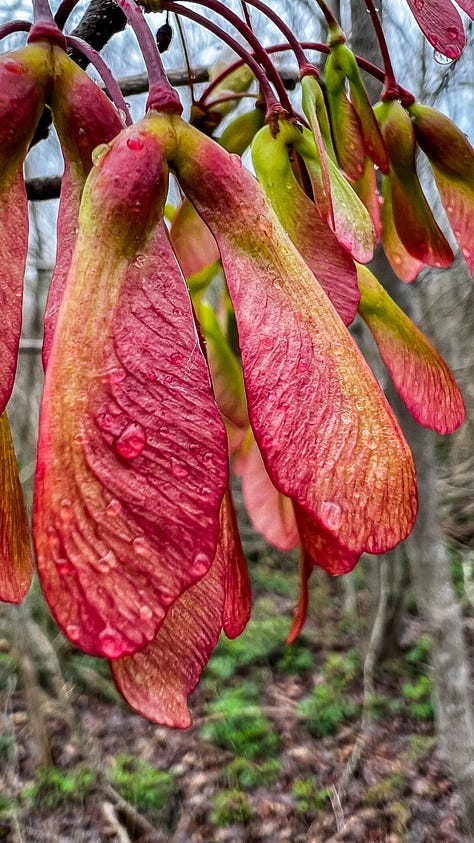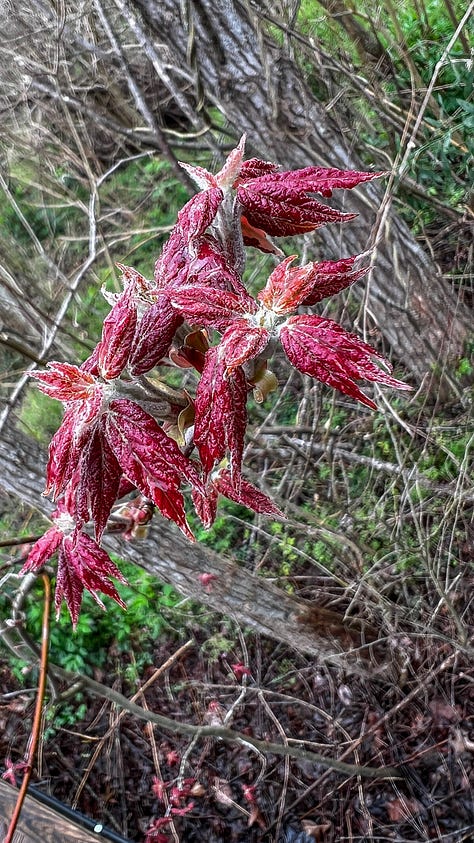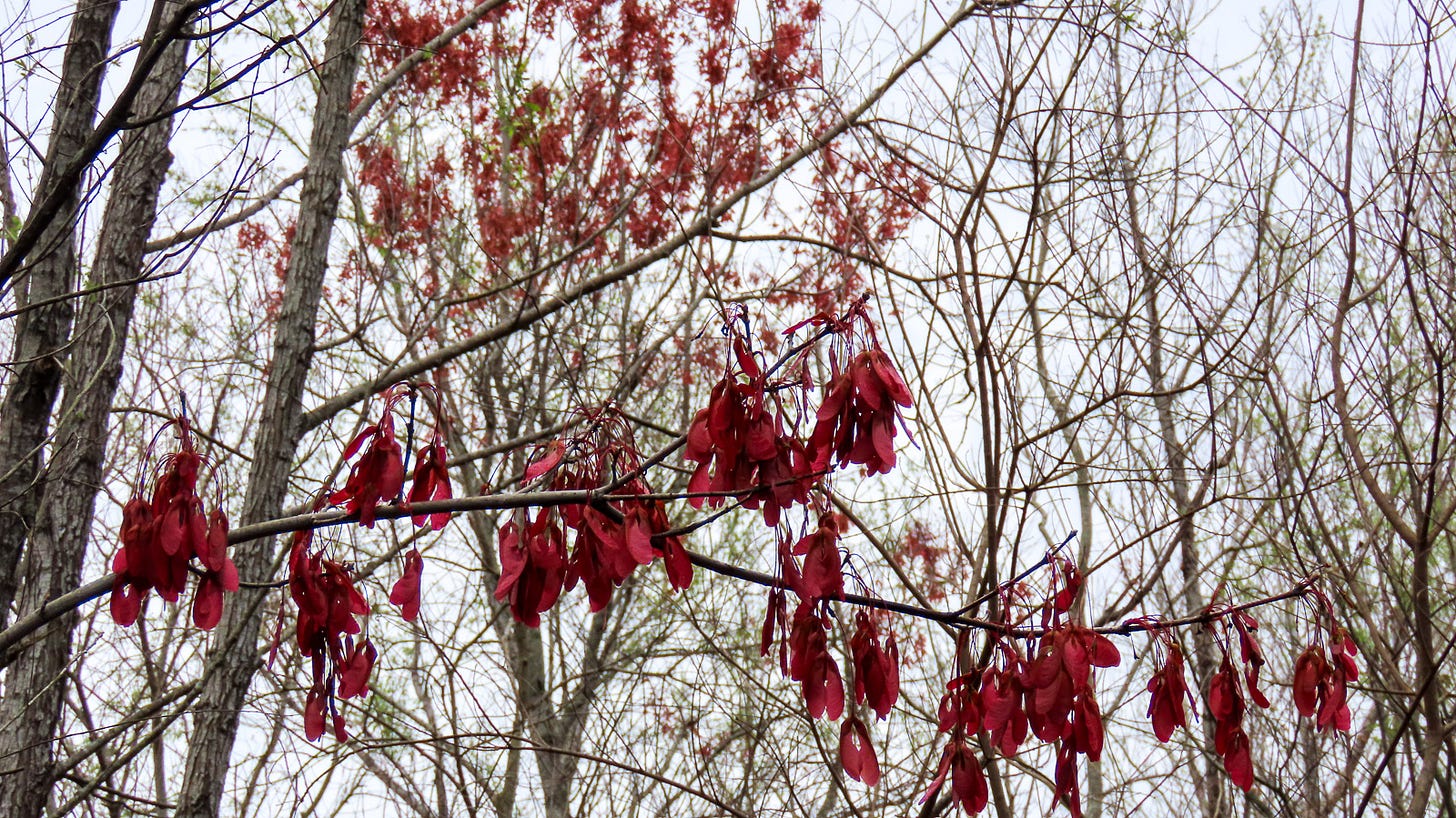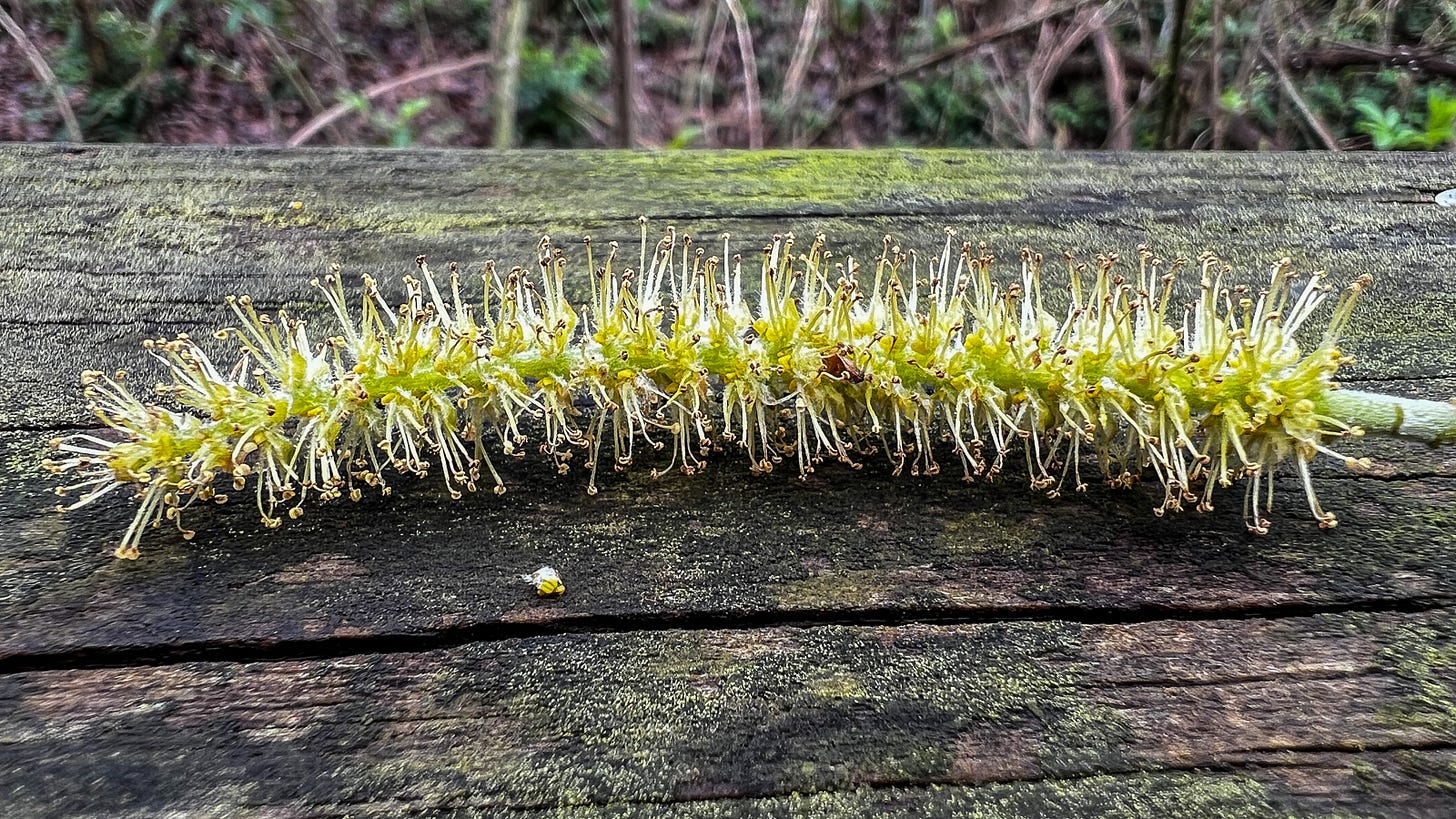Friday, Julie and I volunteered at the Audubon Louisiana Nature Center for the Great Backyard Bird Count. Launched in 1998 by the Cornell Lab of Ornithology and National Audubon Society, the Great Backyard Bird Count (GBBC) was the first online participatory-science project to collect data on wild birds and to display results in near real time. We were the “local bird experts” mentioned in the ad.
Audubon Nature Institute did a really nice job of providing educational materials, and Julie felt right at home. This is exactly the sort of thing she did for a living before Katrina.




The chilly, drizzly weather meant fewer birds were out, but we still enjoyed engaging with the visitors. One highlight was this feather that Ranger Steve found:
This feather is a great example of why our local Northern Flicker is called 'yellow-shafted'. Found mostly in the eastern United States, this sub-species contrasts with the 'red-shafted' variety in the west.
There is also a long, narrow hybrid zone in the Great Plains that parallels the rain shadow of the Rocky Mountains where the two are known to interbreed.
The two types of birds, along with the Gilded Flicker, were originally thought to be three different species, but based on the success of hybridization, they were lumped into the same species in 1982. In 1995, the Gilded Flicker was again split off into its own species, based on its limited hybridization and its unique habitat and life history.
As the event wound down, we took the opportunity to explore the nature center ourselves.
The dewberries are beginning to flower. We have a large patch in our backyard that hasn’t flowered yet, and I’m hoping we’ll get a good crop this year.
The red maples are dropping their fruit and the leaves are beginning to emerge. I thought it was interesting that the red maple develops flowers and fruit before it develops leaves.



The fruits are commonly known as “helicopter seeds” or “spinners” due to their characteristic descent to the ground, but the proper name is double samaras, or winged seeds. The seeds are edible, so I may try one next time I go. The bright red was beautiful on this dull day, and we passed one family with two toddler girls who were wearing the leaves on their noses.
Because of its brilliant red color in the fall, red maple is prized as an ornamental. The sap can be used for producing maple syrup, however its sap has only about half of the sugar content as sugar maple. Native Americans used red maple bark as an analgesic, wash for inflamed eyes and cataracts, and as a remedy for hives and muscular aches.
Later on, we found what we thought at first was a large caterpillar, a bit unusual for this time of year and weather, but it turned out to be a willow catkin (clusters of flowers packed on a single stalk).
With all the wet weather we’d been having lately, the mushrooms abounded. Here’s one Julie noticed along the boardwalk.


The crawfish pond turtles were basking in what little sunshine there was on this dreary day.
We did manage to see a black-crowned night heron at the pond, and got to see it vigorously scratching its head. This always reminds me of a dog scratching its fleas, and could actually be something similar (removing parasites living in the feathers).
Birds also scratch their heads when preening feathers, sometimes applying preening oil to their feet beforehand. Almost all species of birds use only one of two different methods — either a direct method where they bring their foot forward under the wing, or an indirect method by stretching their leg and foot over the wing, and it is almost always the same method within a species.
Under the wing is more common with terrestrial birds, while over the wing tends to be the method used by arboreal birds.
Of course, it could also be they’re itchy and don’t care how they do it, they just gotta scratch.
Finally, we took our traditional selfie (ussie?) next to the large blackberry patch (which, unlike the dewberry, was not flowering).
Despite the weather, our day at the nature center was a reminder of the simple joys of connecting with nature and sharing it with others.












The background of voices during the head scratching video is wonderful! Merlin would be very busy!
Wonderful information! 💜